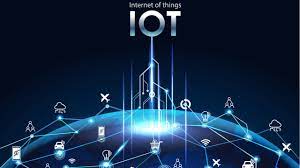PoE devices can be mixed in a network with non-PoE devices, but non-PoE devices cannot power PD (Powered Device) equipment, nor be powered by PSEs. Non-PoE devices must have a separate power source.
PoE Ethernet Switches
PoE Ethernet switches can also power hardware. They inject power into the Ethernet cable to provide power to PoE devices, including access points and security cameras. Learn more about PoE Ethernet switches .
Splitters PoE
PoE splitters receive a PoE signal containing data and power. They separate the data from the power on two different lines to provide support for non-PoE devices. Learn more about PoE splitters .
PoE Repeaters/Extenders
They allow the extension of PoE connections beyond the 100 meter limit to access remote PoE devices such as access points, cameras and VoIP phones. Learn more about PoE Repeaters/Extenders .
PoE media converter
PoE media converters are the perfect way to extend your fiber or copper network while powering PoE devices over long distances. They act as copper/fiber optic converters and power supplies. Learn more about PoE media converters .
PoE injectors
PoE injectors carry data and power over the same Ethernet cable. This type of injector powers various VoIP phones, security cameras, wireless network access points, Bluetooth® access points and other 802.3af compatible equipment. This saves you the expense and work associated with installing power outlets for remote cameras, access points or thin clients. You will also be able to move the equipment from one room to another without going through expensive and tedious wiring work. Learn more about PoE injectors .
What are the PoE standards and types?
The IEEE, Cisco and the HDBaseT Alliance have published several standards to qualify PoE. These standards include IEEE 802.3af, IEEE 802.3at, IEEE 802.3at, IEEE 802.3bt, Cisco UPOE, and Power over HDBaseT (PoH).
IEEE 802.3af Standard : The IEEE 802.3af standard first establishes requirements for PoE power up to 15.4 watts of current without affecting the data rate of Ethernet networks. Power supply equipment conforming to this standard transmits PoE power over two of the four pairs in 10/100/1000BASE-T networks.
IEEE 802.3at Standard : This is basically an extension of the IEEE 802.3af PoE standard. The main objective is to give more power to the DPs. Compatible with the 802.3af PoE standard, the IEEE 802.3at PoE standard doubles the electrical power up to 30W.
IEEE 802.3bt Standard : The IEEE 802.3bt standard is the latest PoE standard that can power the 2.5G/5G/10GBASE-T network through standard Ethernet cable on all four pairs. It establishes two types of PoE, which are Type 3 and Type 4. Type 3 PoE provides up to 60 watts of power and Type 4 provides up to 100 watts.
Cisco UPOE : UPOE, short for Universal Power Over Ethernet, is a creation of Cisco. This extends the IEEE 802.3at standard to use all four cable pairs to deliver up to 60 watts of power, allowing for an extension of the types of devices that can be supported.
Power over HDBaseT (PoH) : Introduced by the HDBaseT Alliance, PoH is based on the IEEE 802.3at PoE standard and can be modified to allow safe distribution of up to 100 watts of electrical power over four pairs of Ethernet cables. It is designed as an economical and easy way to supply power to digital signage in airports, hotels, hospitals, cafeterias or any other environment that needs a video display – eliminating the need for AC electrical outlets.
How much power can PoE devices provide?
PoE+ devices can supply a maximum of 30 watts per port, while PoE Lighting devices can supply a maximum of 15.4 watts per port. However, the length of the cable always results in a loss of power, all the more higher than the wiring is long. The guaranteed minimum power for PD (Powered Device) equipment is 12.95 watts per port for PoE and 25.5 watts per port for PoE+.
PSEs also have a maximum power budget, which is the total amount of power they can deliver to PDs (Powered Devices) at any given time, measured in watts. Most PSEs don’t have enough power budget to power all PoE-capable ports with the maximum power possible, because most users don’t require that much power. When looking to purchase a PoE-enabled PSE, be sure to calculate your required power budget for any Powered Device (PD) equipment you plan to connect.

